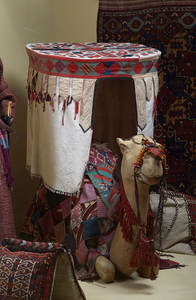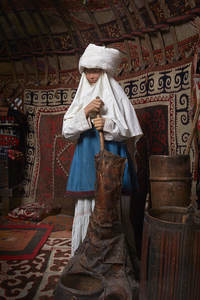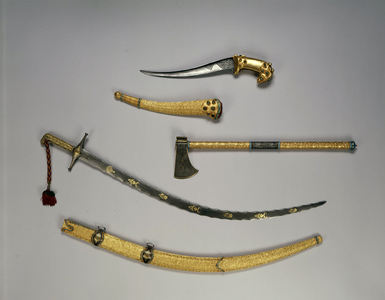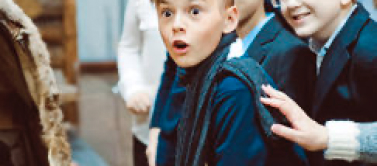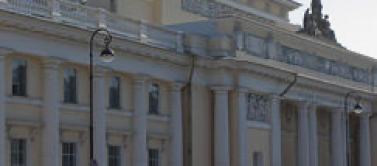
For centuries, the Tajiks, Uzbeks, other farmers settled in oases, and the nomadic Kazakhs, Kirghiz, Turkomans and Karakalpaks feeling at home in steppe expanse lived side by side in Central Asia and Kazakhstan. The Museum exposition is indicative of the cultural uniqueness of the region. What did the Central Asian peasants or dehkans grow in their fields, and what crop was considered the main treasure? What tilling tools did they use? Where did they get water to irrigate fields in arid areas? What animals did the nomads raise, and how was the nomadic cycle structured? How were their dwelling places, clothes, and domestic utensils adapted to nomadic life? Why is yurt considered the best house for a nomad? Why was the spring migrating considered the main event of the year? When and how did they celebrate the main feast, that is the New Year or nowruz? What is dastarkhan?
The cultural identity of the region was determined by coexistence of two different civilizations, settled and nomadic, which was reflected in the structure of the exposition comprising two basic sections. The first one is dedicated to the traditional culture of the Tajiks and Uzbeks who were predominantly settled tillers. The second section illustrates the culture of the region’s semi-nomadic peoples – the Kazakhs, Karakalpaks, Kirghiz, and Turkomans who acclimated to areas unsuitable for arable farming, being mainly occupied with cattle breeding.
The first section is dedicated to the traditional urban culture of the region’s middle, the Central Asian Mesopotamia, generated equally the Uzbeks and the Tajiks. They were the trade and craft population in Bokhara, Samarkand, Khiva and other cities, and had much in common in their ritual and everyday practices.
In the display you will see samples of traditional homespun fabrics, copper tableware with elaborated engraved patterns, painted ceramic utensils, original jewelry, and delicate silk embroidery. These objects are displayed in atmosphere scenes, to show the context of their application.
One of the scenes reproduces the rite of initiation of a craft guild apprentice as a craftsmaster. The head of the guild tied a belt around the initiated as the symbol of his new status. The grateful apprentice presented to the instructor a set of clothing.
The exposition reconstructs the traditional interior of the show room in an urban house. The ancient rite of putting a baby into the cradle for the first time is shown here. It was accompanied by magic acts to ensure his/her health and prosperity.
The onstage glove and string puppets are unique exhibits. They are demonstrated in the section dedicated to the culture of urban performances.
Shown in a special section are items related to Islam – manuscript edition of the Quran on a support, prayer rug, circumcision knife, and ritual washing vessels. A special complex presents the attire and attributes of dervishes who were adherents of Sufism, a mystical and ascetic movement in Islam.
A separate theme is the culture of semi-nomadic Uzbeks whose traditional occupations were cattle raising and crafts related to wool and leather processing.
The rarity exhibits convey the cultural uniqueness of the culture of the Mountain Tajiks and Pamir peoples, which long retained archaic traits under mountain isolation. Among these things are molded ceramic tableware, wooden utensils with carved ornament, and inflatable leather bag for crossing mountain streams. Unique are wedding face curtains of the mountain Tajik women where the embroidered patterns include ancient magic symbols.
Section Two: The image of a steppe expanse creates a special atmosphere to display exhibits telling about the culture of the region’s cattle-herding peoples. Its original forms were determined by the nomads’ mobile lifestyle. This is most colorfully displayed by the yurt, a sectional dwelling whose design and picturesque interior are reproduced in the exposition. The environment of a Kazakh yurt is complemented with the guest hosting scene illustrating the custom of hospitality, a most important etiquette norm with nomads.
A special importance of migrating for the entire lifestyle of nomads was reflected in the theme where the situation of packing for a trip, cattle moved by the shepherd, and loading domestic goods and chattels on the horse is conventionally illustrated through the example of the Kirghiz. Movement, freedom, and expanse are the supreme good for nomads, therefore the notions “to migrate” and “to live” are in fact inseparable in their views.
The Turkoman everyday culture is represented by famous tapestries, which surrounded a person throughout his life. Carpets played a great role in the Turkoman wedding ritual illustrated in the exposition by the ritual of meeting the bride in the groom’s home. Demonstrated here are such rare exhibits as ornate drapery of a camel of the wedding caravan and the bride’s wedding tent placed on its back. A complex set of silver decorations played a special role in the Turkoman women’s wedding costume.
The bride’s costume is also in the center of the set of Karakalpak artifacts. Each component of the costume is unique; primarily it is the splendid headgear shaped as an ancient helmet, and a richly embroidered dress called “mail armor pattern.”
A special theme is manufacturing of woolen fabrics and felt, the materials which enabled the region’s nomads to adapt to the harsh climate of Eurasia’s mountain-and-steppe belt. The rich ornament of the felts depicts the world view of their makers, symbols of fertility and prosperity creating a feeling of joy and harmony.

